Home A/V connections glossary
30-pin-to-USB cable
30-pin-to-USB is an Apple® connection cable that provides charging and data syncing for early iPod®, iPhone®, and iPad® models. It features a proprietary plug on one end, and a type-A USB plug on the other end. The 30-pin cable has been replaced by the Lightning™-to-USB cable for most Apple devices.
5-way binding posts
5-way binding posts are a type of wire terminal found on speakers, receivers, and amplifiers. They accept bare speaker wire and four different types of connectors: pin connectors, spade connectors, banana plugs, and dual banana plugs.
75-ohm coaxial cable
75-ohm coaxial cable is used for high-speed data and audio/video signal transmission. The most widely used type is called RG-6. Common uses for coax cable include TV antennas, cable boxes, modems, and satellite receivers. Bulk coax cable can be terminated with RCA, F-type, or BNC connections using a compression tool.
AM antenna input
Many tuners and receivers use an external antenna for AM radio reception. Typically there are two connection inputs, one labeled AM and the other labeled ground. Most loop antennas have interchangeable bare wire leads that can be used for either input.
Bi-amping
Bi-amping is a speaker connection method that uses two channels of amplification to power a single speaker. For bi-amping to work, each speaker needs to have two sets of input terminals. This feature is found on select tower speakers and premium bookshelf speakers.
Bi-amping increases the amount of useable current that each speaker gets. It can boost audio performance by separately driving the low and high frequencies. Bi-amping is an option on receivers that have assignable amplification channels, like home theater receivers. Learn more about bi-amping here
Bi-wiring
Bi-wiring is a speaker connection method for select tower speakers and premium bookshelf speakers. For bi-wiring to work, each speaker needs to have two sets of input terminals. One amplifier channel is divided between the two pairs of terminals. This separates high- and low-frequency return audio paths and can result in better audio performance. A special bi-wire speaker cable is used for each speaker.Learn more about bi-wiring here.
Coaxial digital cable
A coaxial digital cable transmits a digital audio signal between two devices. It's commonly used with home theater receivers, music streaming devices, and disc players. Coaxial digital cables look virtually identical to single analog RCA cables. But they are specially designed to handle the wide frequency bandwidth of digital signals. A single cable is used to transmit the entire digital signal. Coaxial digital connection ports are typically orange.
Component video cable
A component video cable transmits high-quality analog video information. It's used with DVD players, TVs, and older gaming consoles. This 3-cable connection allows the color (chrominance) and brightness (luminance) portions of a video signal to be processed separately. Component video cables have red, green, and blue cable jackets with an RCA connection on each end. They have been replaced by HDMI as the preferred connection method for high-definition video.
Composite video cable
A composite video cable transmits a standard-definition analog video signal. It combines the color and brightness portions of a video signal together in a single cable. Composite video ports are commonly found on A/V components like DVD players, VCRs, and TVs. They have a yellow RCA plug on each end. They're usually grouped with red and white stereo audio ports for a complete A/V signal.
DisplayPort
DisplayPort is a digital connection used with computers, monitors, and HD displays. It can transmit audio, video, and other high-speed data. A DisplayPort connection can be converted to HDMI using an external adapter.
DVI (Digital Visual Interface)
DVI is a multi-pin connection used for passing digital video signals. It's found on some TVs, computers, and monitors. There are different kinds of DVI connections. DVI-D is the type of connection found on most home video gear. It carries digital-only signals. DVI-I is used with some computer video cards and can pass both digital and analog video signals. DVI connections can be converted to HDMI using an adapter.
Ethernet cable
Ethernet cables are used to connect devices to a network for high-speed access. Ethernet connection ports are found on computers, Smart TVs, gaming consoles, and Internet music players. Ethernet cable can be bought in bulk for custom length runs. RJ-45 connectors and a compression tool are used for termination. Pre-terminated fixed-length cables are also available.
Ethernet cables are identified by their category (CAT for short). There are numerous versions available. CAT-5e (e for enhanced) and CAT-6 cable are the most common types used today. CAT-5, once revolutionary, is nearly obsolete in today's high-speed world. CAT-5 is capable of network speeds up to 100 Megabits per second. CAT-5e is ten times faster, with speeds up to 1000 Mbps (Gigabit). CAT-6 wire is by far the most capable, with speeds up to 10 Gigabits per second.
Firewire® (IEEE 1394)
Firewire is a 6-pin connection input that's used in computers and audio recording equipment. Originally developed by Apple, it has been replaced by Thunderbolt™ in recent years. Firewire is also known by its generic IEEE 1394 designation.
FM antenna input
Many tuners and stereo receivers use F-type coaxial inputs for their FM antenna connection. Some inputs have threaded post that the antenna screws onto, while others use a push-on post.
HDMI (High-Definition Multimedia Interface)
An HDMI cable is today's go-to connection for high-definition audio and video transmission. It's used with TVs, gaming systems, home theater receivers, computers, and HD monitors. The standard HDMI cable has an identical plug on each end. Inside there are 19 individual wires. They carry audio and video data along with control signals, low-voltage power, Ethernet, and copy protection.
Standard-size HDMI cables are called Type A. Compact devices like smartphones, cameras, and camcorders use mini HDMI (Type C), or micro HDMI (type D) because of their small form factor. Learn more about HDMI .
Headphone connections (1/4" and 1/8")
Stereo headphone connections come in two sizes: full-size (1/4") and mini (1/8"). Home A/V components like CD players, receivers, and headphone amplifiers use the 1/4" connection. Smartphones, tablets, and computers use the smaller 1/8" jack.
Headphones with 1/4" plugs can be stepped down to 1/8" to plug into a mobile device. Headphones that use a 1/8" plug can be stepped up to 1/4" to fit equipment that uses a full-sized connection.
LFE (Low Frequency Effects)
Home theater receivers use a single RCA output for the subwoofer connection - that's the ".1" in a 5.1 system. This output is often labeled LFE. It sends bass information to a powered subwoofer. LFE connections use a subwoofer cable for hookup.
Lightning-to-USB cable
Lightning-to-USB is an Apple connection cable for its mobile devices. It provides charging and data syncing for current iPhone, iPad, and iPod models. It features a proprietary 8-pin plug on one end, and a type-A USB plug on the other end. The Lightning cable has replaced the 30-pin-to-USB cable used with older Apple devices.
MHL (Mobile High-Definition Link)
MHL is a technology standard that uses HDMI to stream high-definition content from an A/V source to a compatible display. On the display end of an MHL cable is a type-A HDMI plug. On the source end is a USB connection. The USB type varies depending on the device being used. Here's a list of compatible MHL equipment.
MHL-capable sources include Android™ phones and tablets, Blu-ray players, and video streaming devices. Compatible displays include TVs, computer monitors, and car stereos. Learn more about MHL here.
Mini DisplayPort
Mini DisplayPort is a small digital connection that transmits digital audio and video to a compatible display. Its primary found on Apple computers, but is also used on some Windows®-based PCs. A Mini DisplayPort connection can be converted to HDMI using an adapter.
Mini-Toslink cable
A Mini-Toslink cable is used to connect a digital source to a standard optical digital connection. On one end is a mini-optical plug that's nearly identical to a 3.5mm analog audio connection. On the other end of the cable is a standard optical digital connection. Mini-Toslink outputs are found on Macbook® computers and other portable digital devices. A full-size optical connection can be converted to a mini-optical plug using an adapter.
Multi-channel RCA inputs
Multi-channel RCA inputs connect an analog source to a receiver or amplifier. They are primarily used with premium Blu-ray, DVD, and Super Audio CD players. These elite players offer high-quality surround decoding and digital-to-analog conversion. Their capable circuitry often yields better results than connecting to a receiver through HDMI.
A 5.1 setup has individual connections for the left and right front, left and right surround, and center channels. A 7.1 system adds connections for rear left and right surrounds. The ".1" is the connection for the subwoofer, sometimes labeled LFE for Low-Frequency Effects. Each channel uses an individual RCA cable for connection.
Optical digital cable (Toslink)
An optical digital cable uses light energy to transmit a digital audio signal from one component to another. Inside the cable are very thin optical fibers that carry the signal. Optical digital connections are found on most A/V gear.
Phono (turntable) input
A phono input is a pair of dedicated RCA connections for a turntable. It's found on integrated amps, stereo receivers, and home theater receivers. The incoming signal is sent through a phono preamp circuit where special audio processing and voltage boosting are applied. Phono inputs look identical to the other analog RCA inputs on the back of a stereo, but are only used for connecting a turntable.
Receivers with a phono input also feature a ground screw for connecting your turntable's ground wire. If your receiver or preamplifier doesn't have a phono input, you can use an in-line phono preamp. This allows you to connect your turntable any regular line-level input. Learn more about connecting a turntable to a receiver.
Power cables (C7 and IEC)
Many home A/V components feature a detachable power cord. There are two common plug types: a 3-pole IEC connector, and a 2-pole C7 connector. Replacing the stock power cord can improve audio and video performance. Longer cord lengths also provide flexible placement options.
Speaker wire
Speaker wire connects a non-powered speaker to an amplifier or receiver. Speaker wire has two leads: one for the positive signal, and one for the negative. Usually speaker wire is marked (+) and (-) to help distinguish between the two.
Add speaker wire connectors to bare wire for additional connection options. Learn more about speaker wire here.
Speaker wire connectors
All speaker wire connectors are designed to make solid electrical contact between your speaker wire and your gear. They also make plugging and unplugging your equipment significantly easier that bare wire alone. There are four main kinds of speaker wire connectors:
-
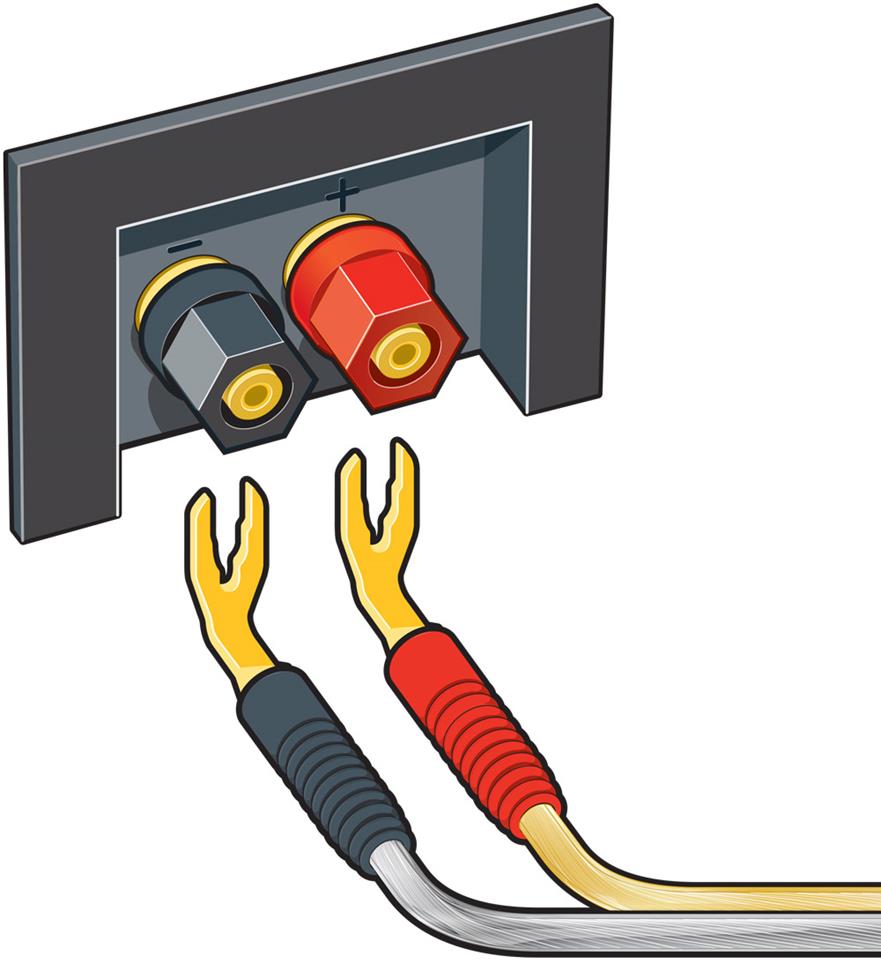
Spade connectors:
Spade connectors feature a forked piece of metal that hugs the collar of a 5-way binding post terminal. The spade is then secured by tightening the binding post's cap. Spade connectors give you very secure contact.
-
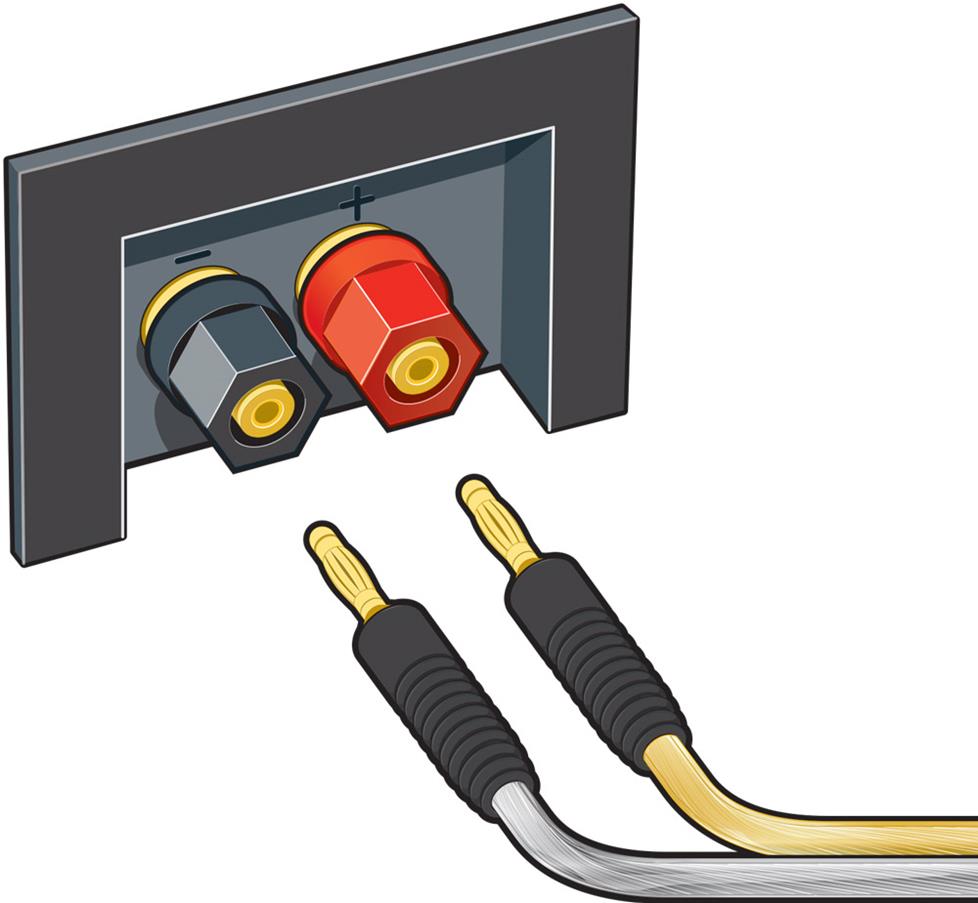
Banana plugs:
If you have binding post terminals on your speakers and/or receiver, banana plugs are a great choice. The flexible metal collar of a banana plug is slightly wider than the center hole of a binding post. It compresses to fit when you plug it in, resulting in a very solid connection.
-
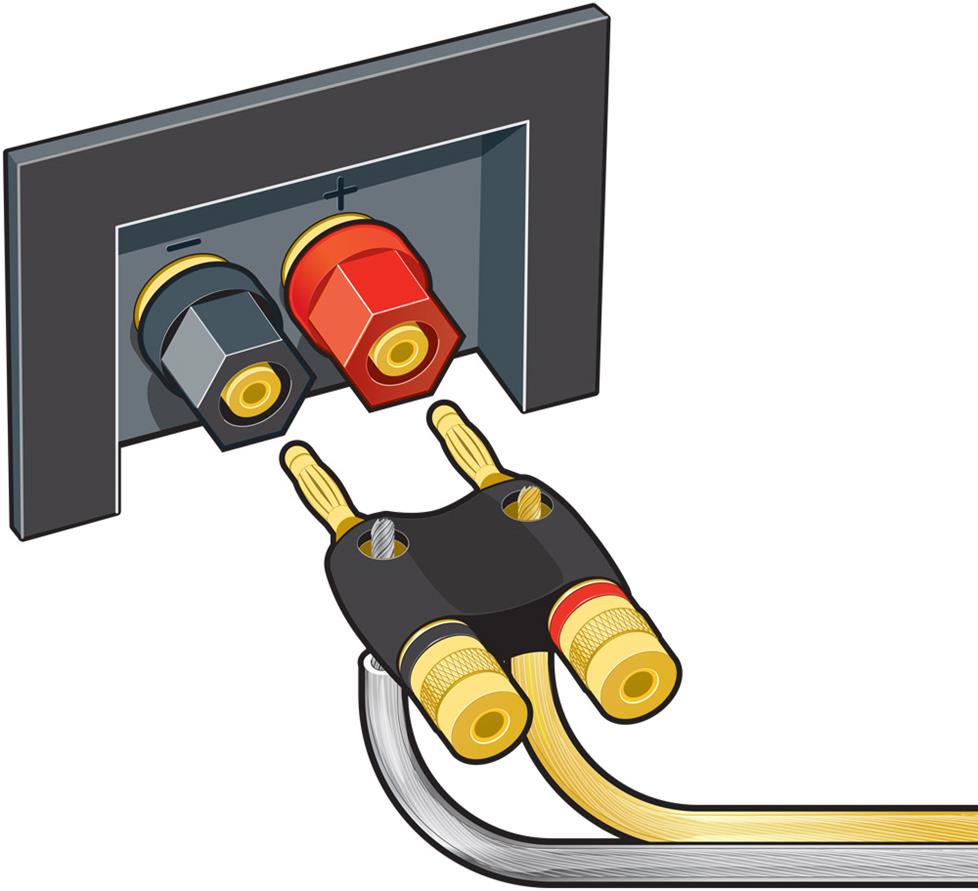
Dual-banana plugs:
Dual banana plugs have positive and negative banana connectors fixed in a molded housing that spaces them 3/4" apart. These are easier to connect than single banana plugs when used with 5-way binding posts.
-
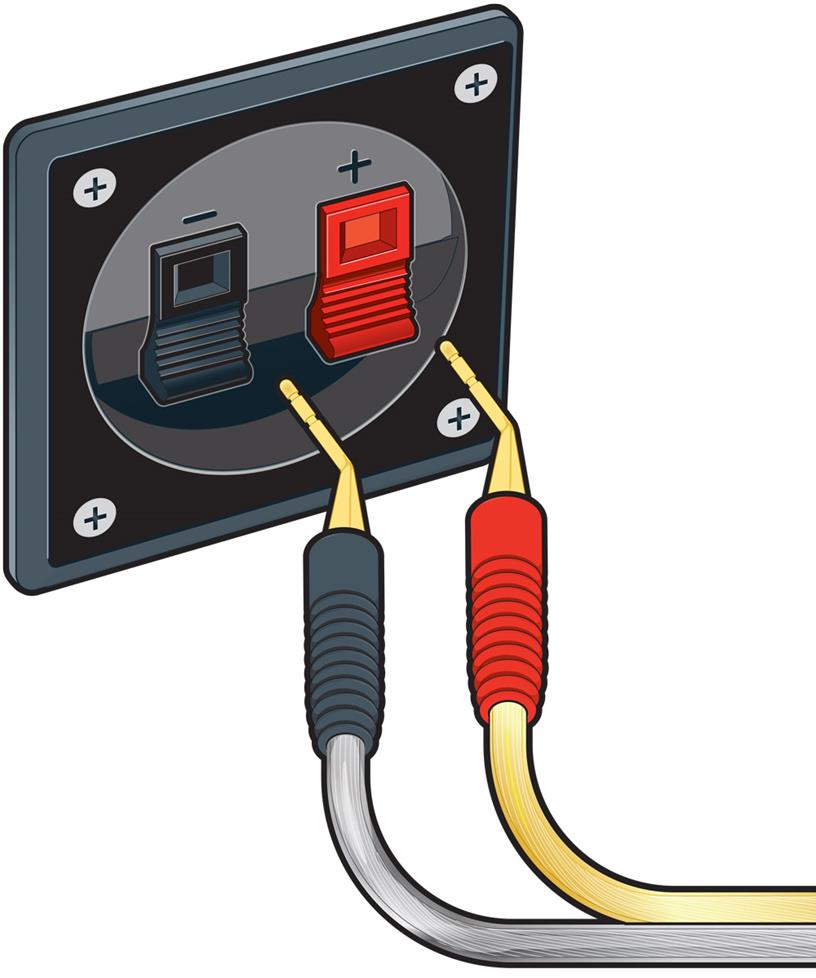
Pin connectors:
Pin connectors may either be straight or angled. They work with spring clip speaker terminals, as well as with binding posts.
Speakon® connector
A Speakon connector is a type of plug used to securely connect speakers and amplifiers together. They are commonly used with recording and pro equipment. Speakon connections are also used to make a speaker-level connection between a compatible powered subwoofer and the front-channel outputs of an integrated amplifier, power amp, or stereo receiver. A Speakon connector is also known by its generic NL4 designation.
Stereo mini-to-mini cable
Stereo mini-to-mini cables are commonly known as auxiliary or "aux" cables. These analog cables feature a 1/8" male plug on each end. They are commonly used to connect mobile device to a powered speaker or car stereo.
Stereo mini-to-dual RCA cable
Stereo mini-to-dual RCA cables have a 1/8" stereo-mini connection on one end, and a pair of male RCA plugs on the other end. They are used to connect devices that have a 1/8" output to receivers and amplifiers that feature left and right RCA inputs.
Stereo RCA cables
Stereo RCA cables connect two analog audio components together. They are found on most types of A/V gear. Stereo RCA cables come in pairs, with one connection for the left audio channel and the other for the right channel.
S-video cable
S-video cables use a round 4-pin jack used to pass an analog video signal. The "S" in S-video stands for "separate". S-video isn't used much these days, but can be found on older DVD players, VCRs, and TVs.
Thunderbolt
Thunderbolt is a high-speed digital input and output technology commonly found on Macintosh® computers. It transfers audio, video, and other data through a single connection. It's used with hard drives, monitors, and other Thunderbolt-compatible devices. Thunderbolt has replaced Firewire as the a digital connection on Apple computers.
USB (Universal Serial Bus)
USB is a digital interface that connects compatible devices together. It's used to transfer audio, video, and other digital information. Originally designed for computers, USB cables are now used for data transfer and charging in a wide range of components. It's a common method of connection for smartphones, camcorders, digital cameras, keyboards, and printers. USB inputs can be found on computers, TVs, home theater receivers and car stereos. Flash drives connect via USB as well.
The standard USB connection is considered Type A - that's the one that plugs into your computer. There are other variations of USB that have different plug sizes and shapes. Type B USB plugs are commonly used with printers. Micro USB plugs are found on smartphones and other portable devices. Here's a full list of USB variations and plug types.
VGA cable
A VGA cable has 15 pins and carries an analog video signal. It is primarily used to connect a computer to an external monitor. It's also popular for hooking up a computer to a TV that has a PC input.
XLR cables
XLR cables pass an analog signal between compatible audio components. They're commonly used with high-performance two-channel systems, as well as with microphones.
An XLR connector has three pins - a positive conductor, a negative conductor, and a ground. The presence of the ground wire makes XLR cables known as "balanced" cables. It helps reduce electronic noise throughout the cable. A clasp built into the round XLR plug locks it tightly into the receiving socket, ensuring a secure connection.
Comments (67)
Please share your thoughts below.




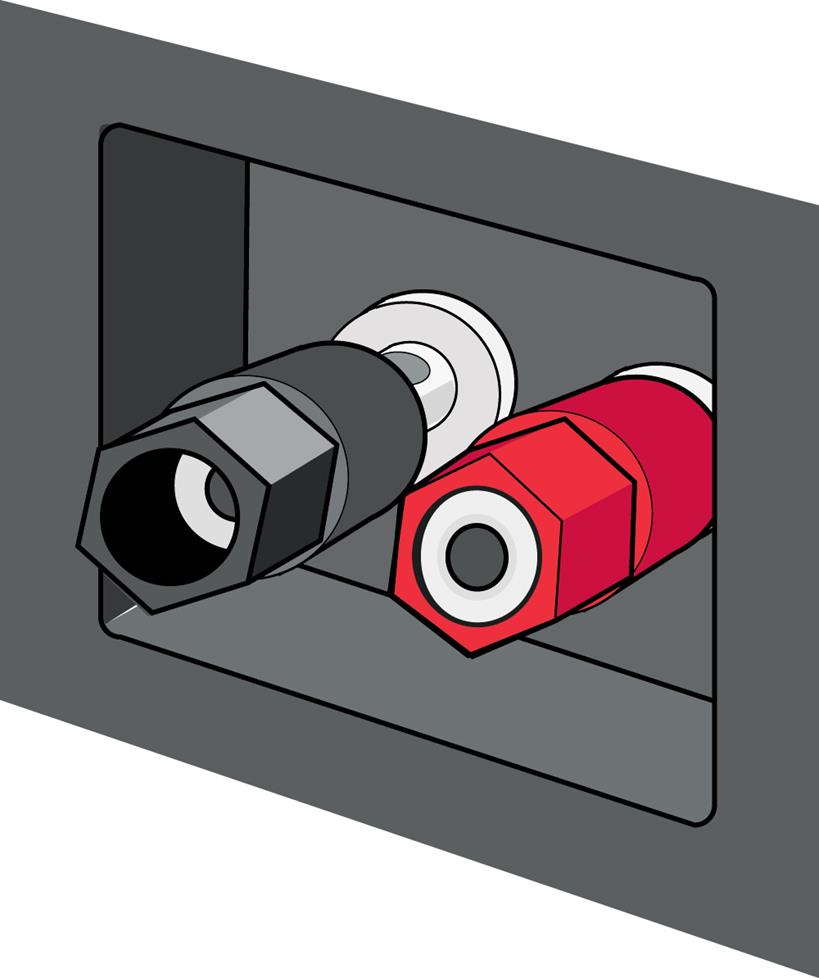
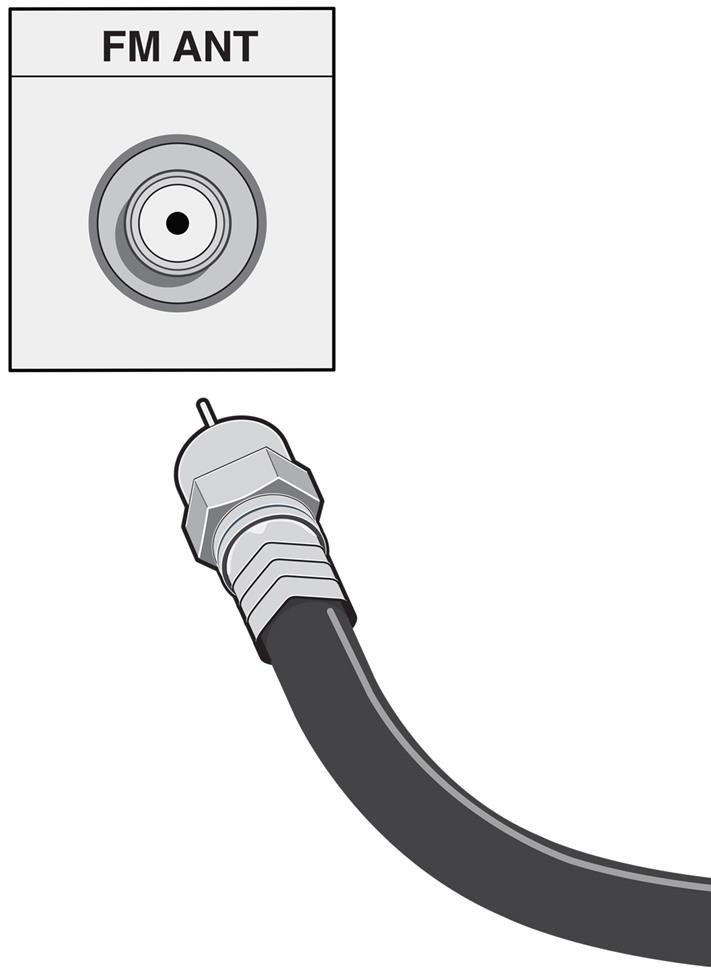
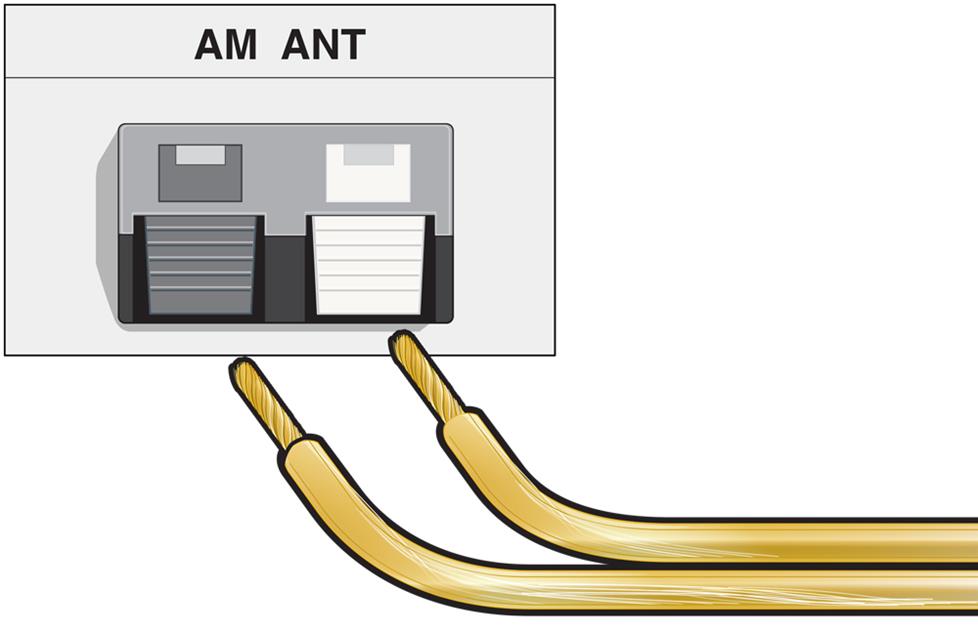
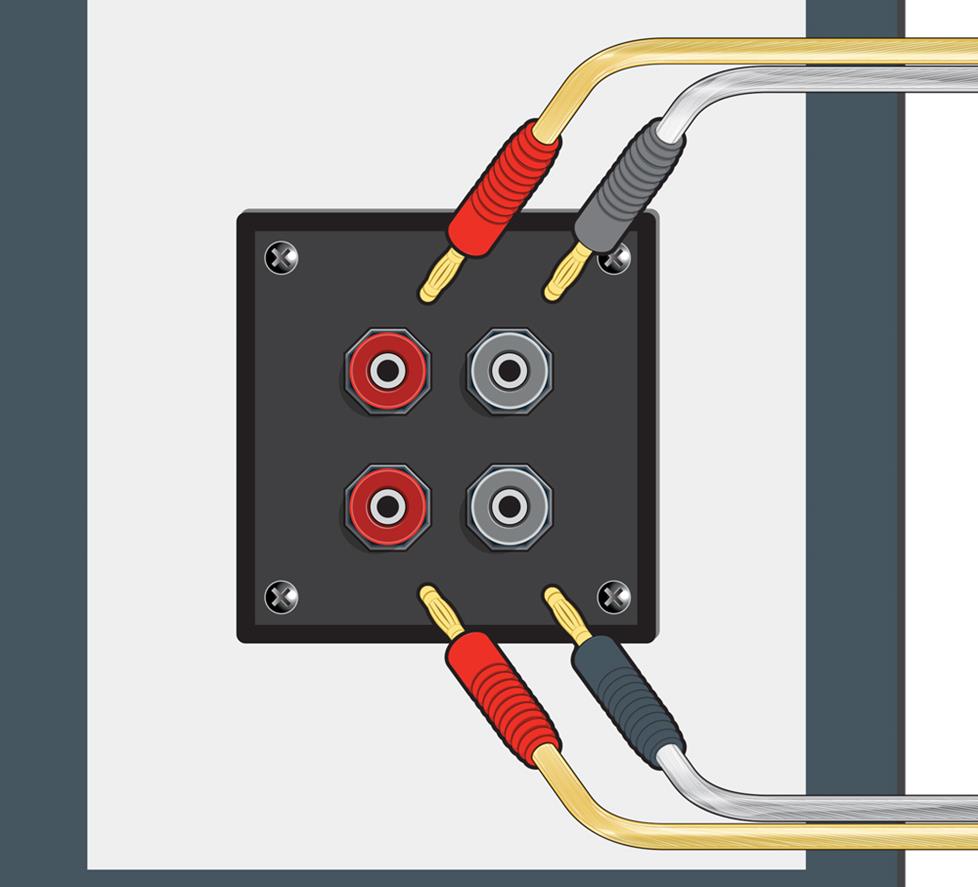
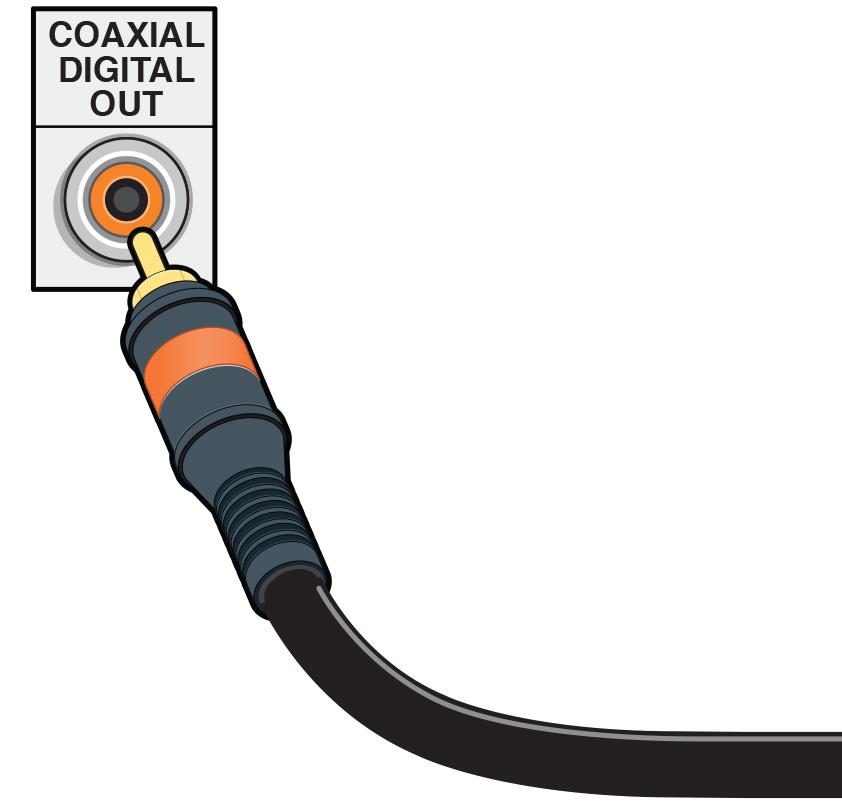
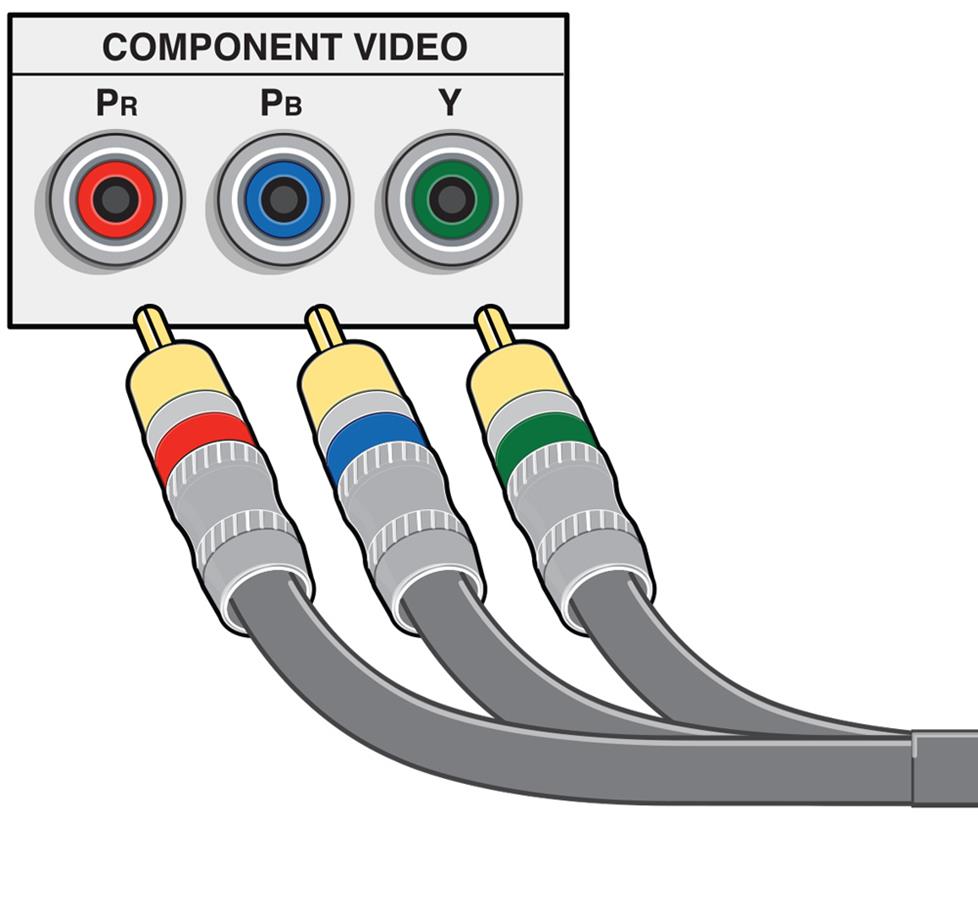
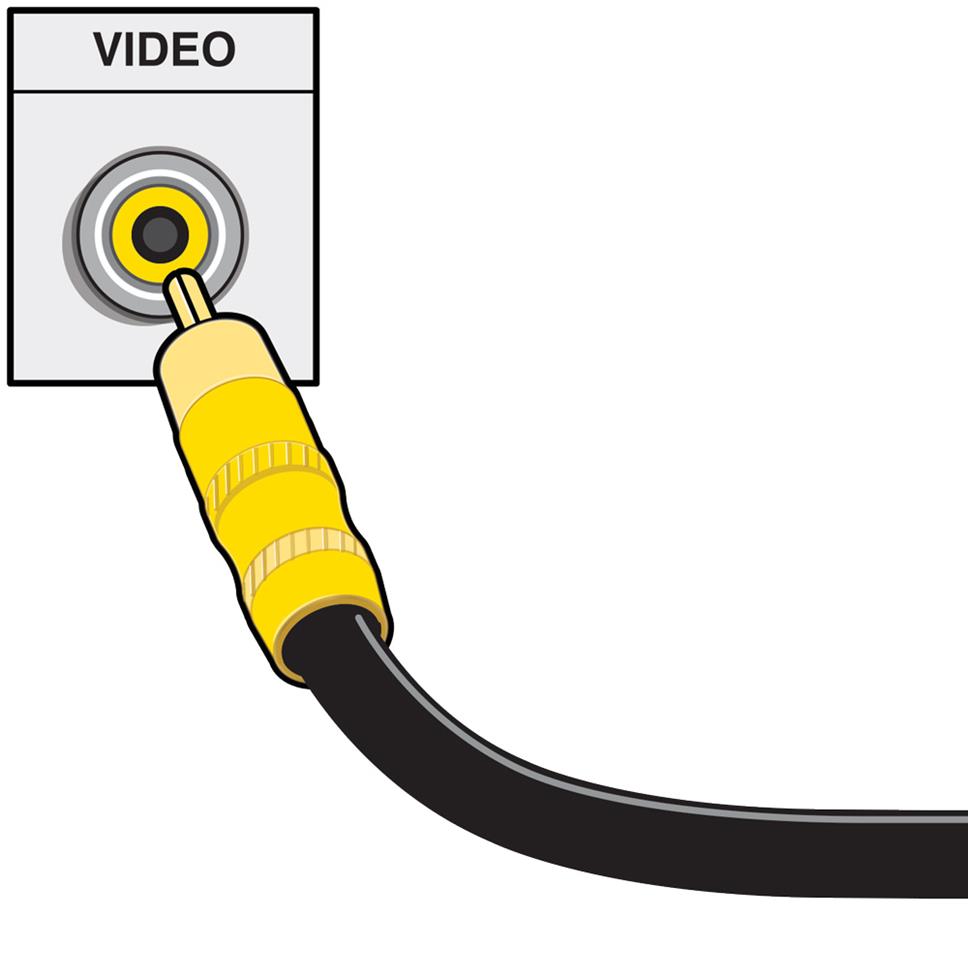

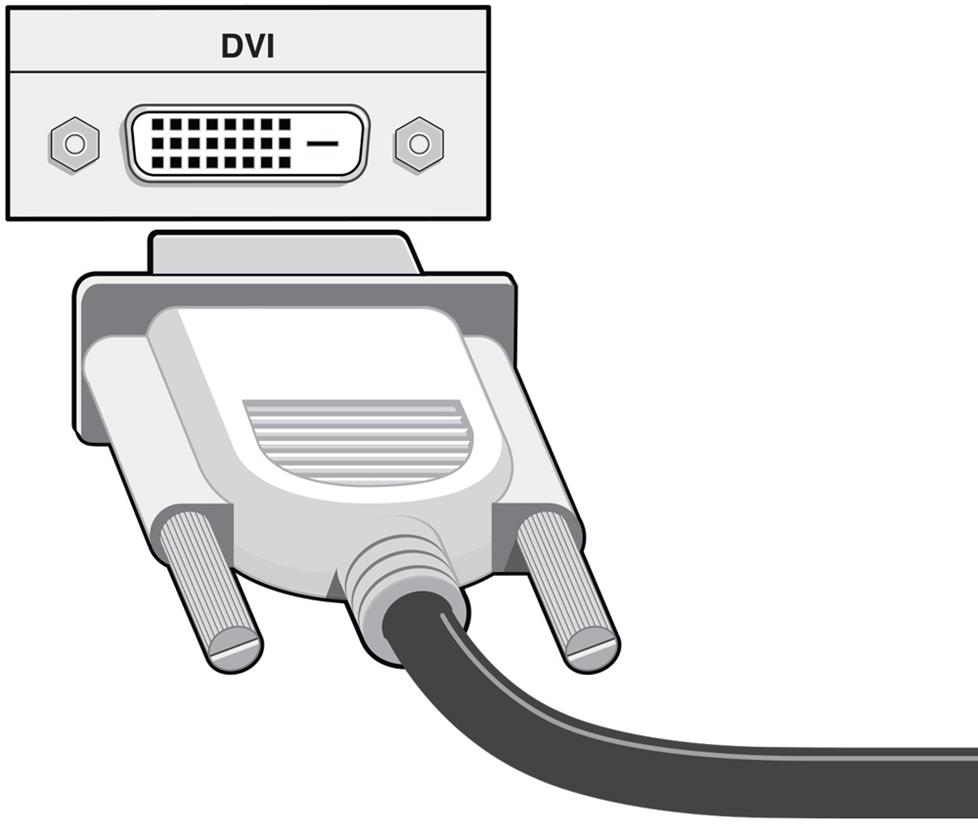

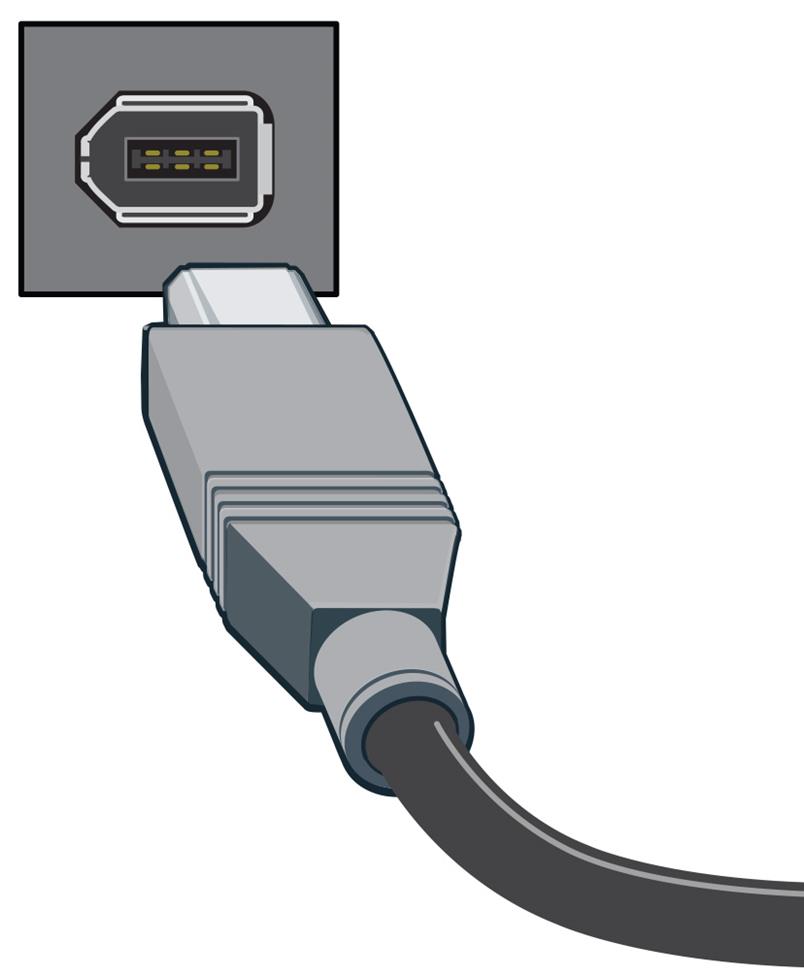
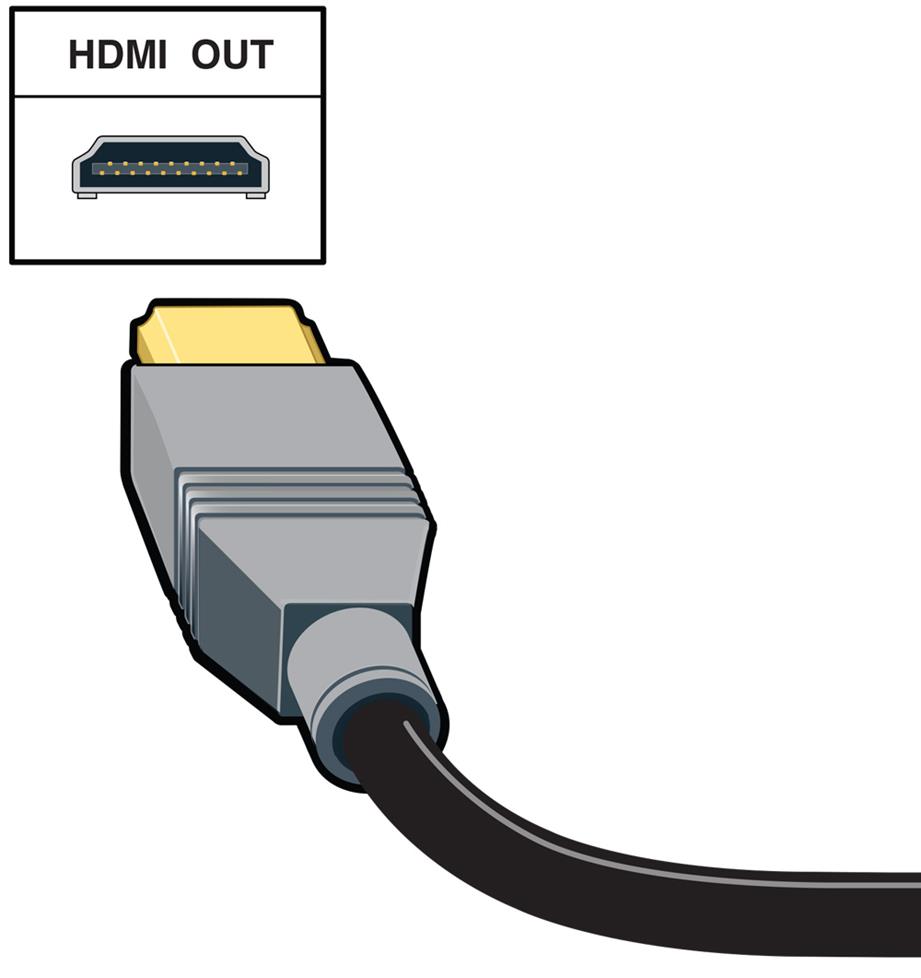
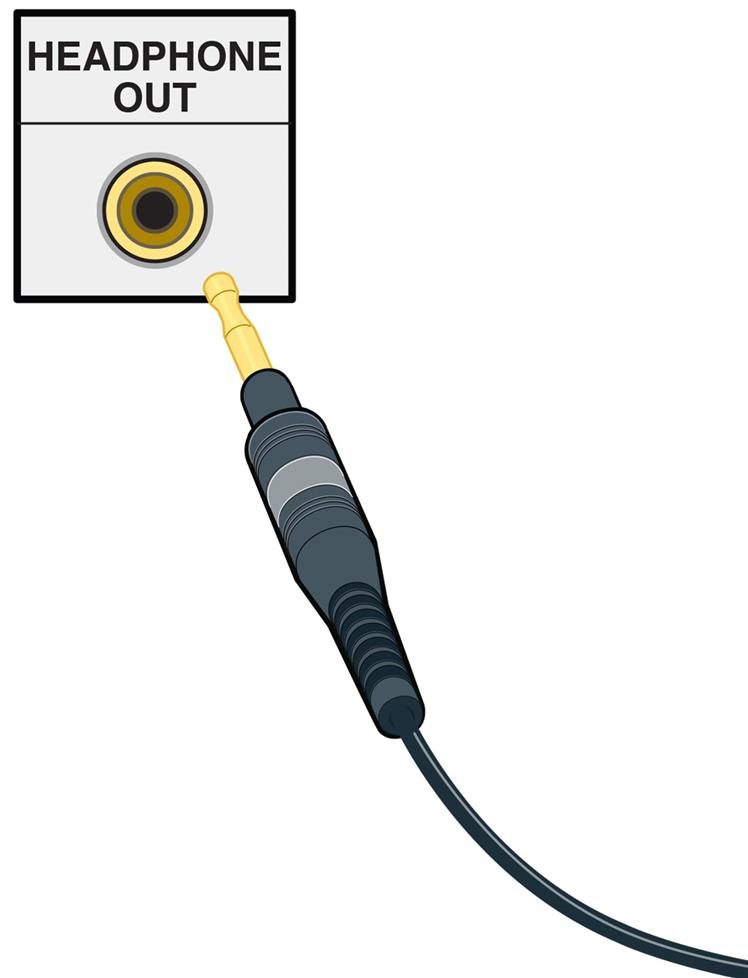
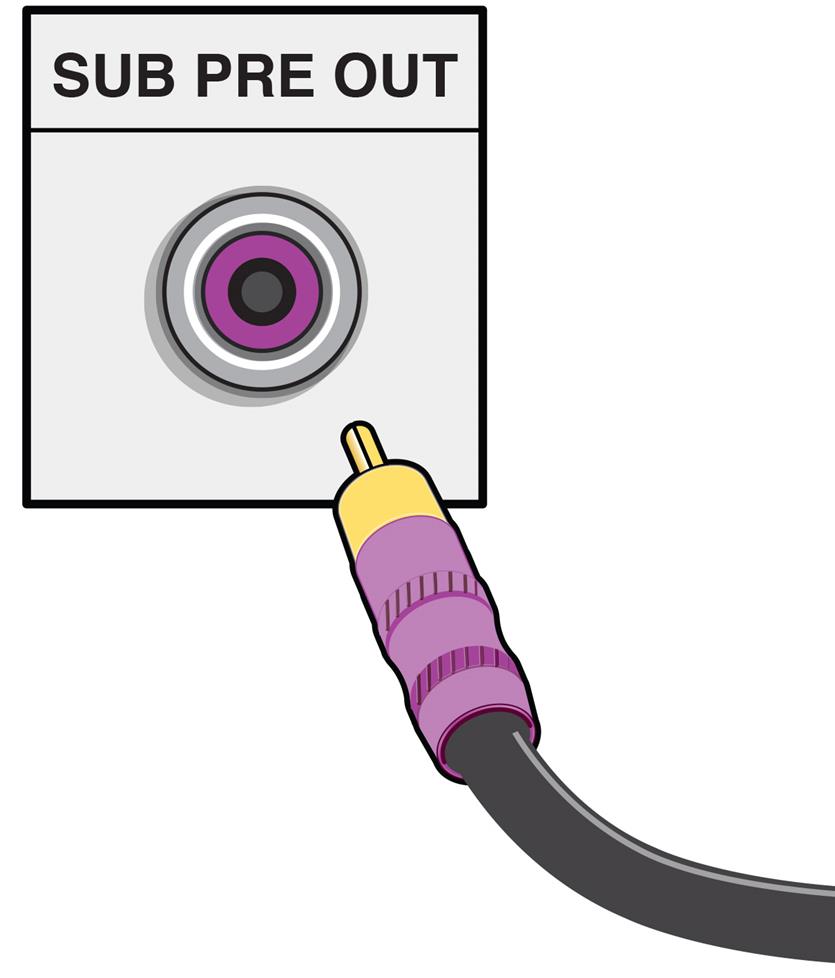
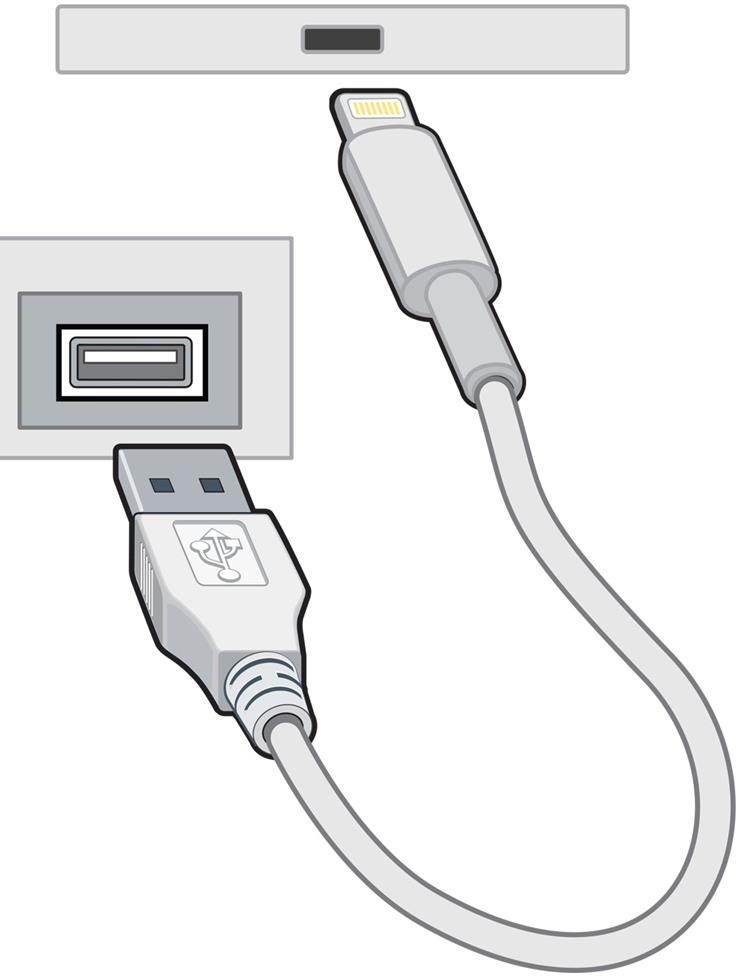

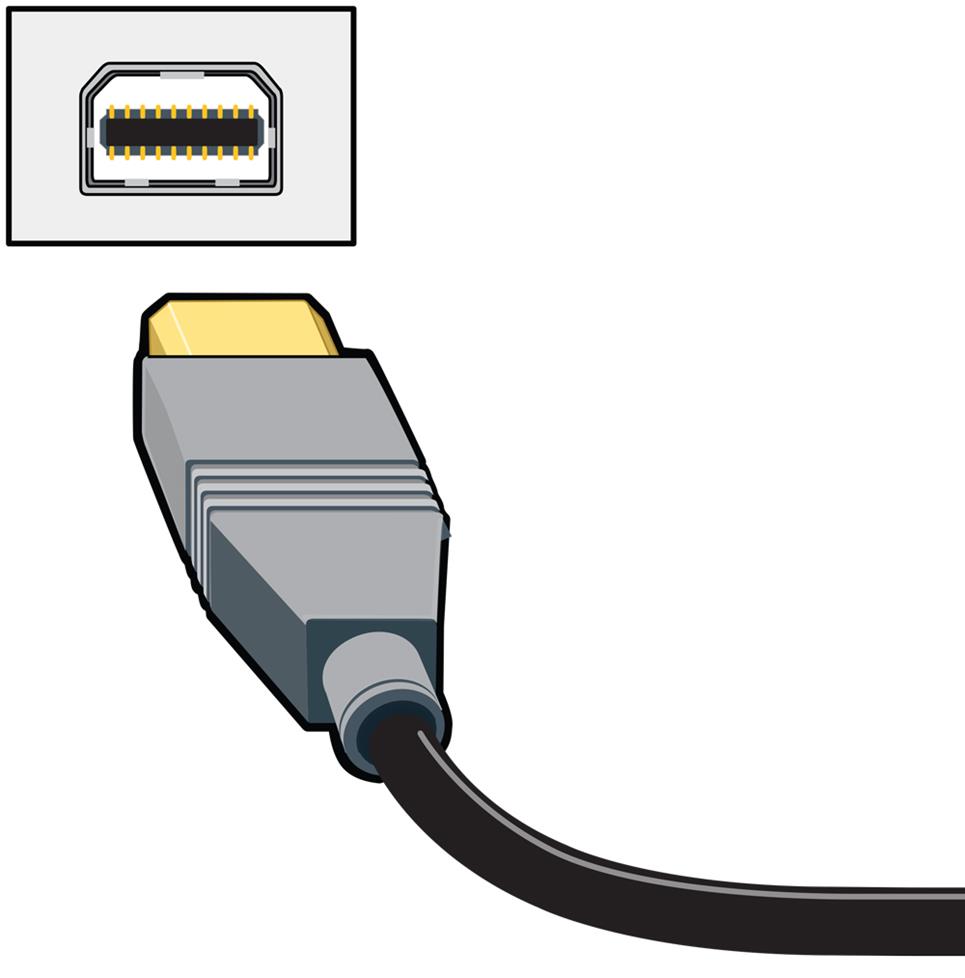
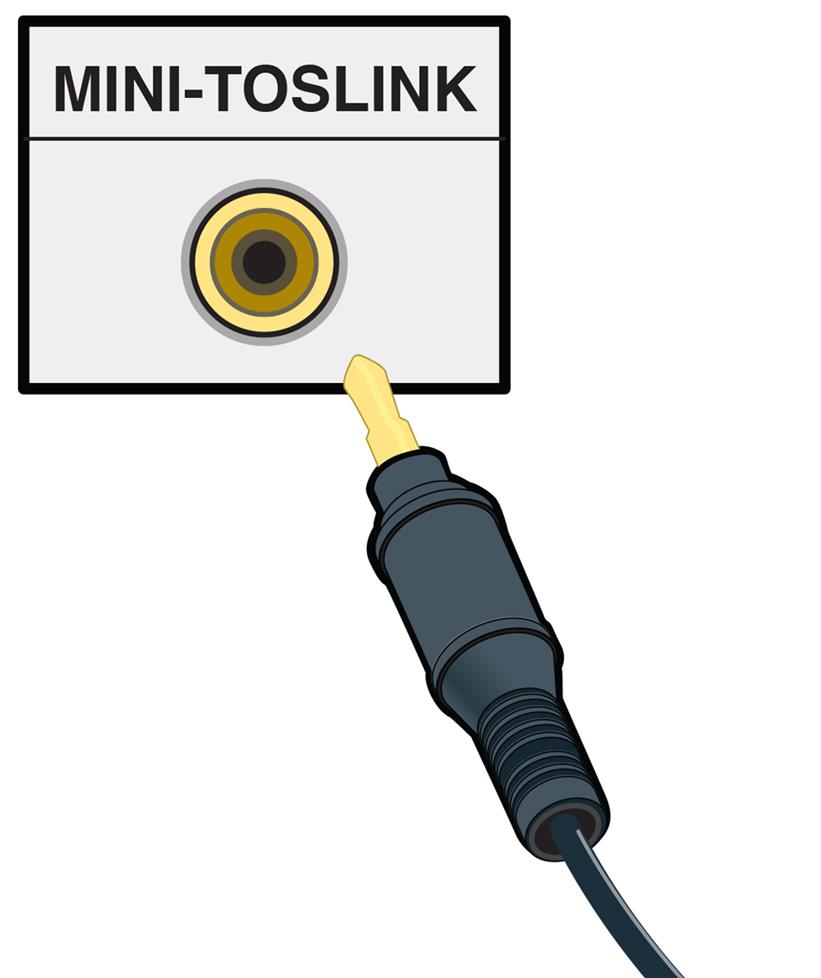
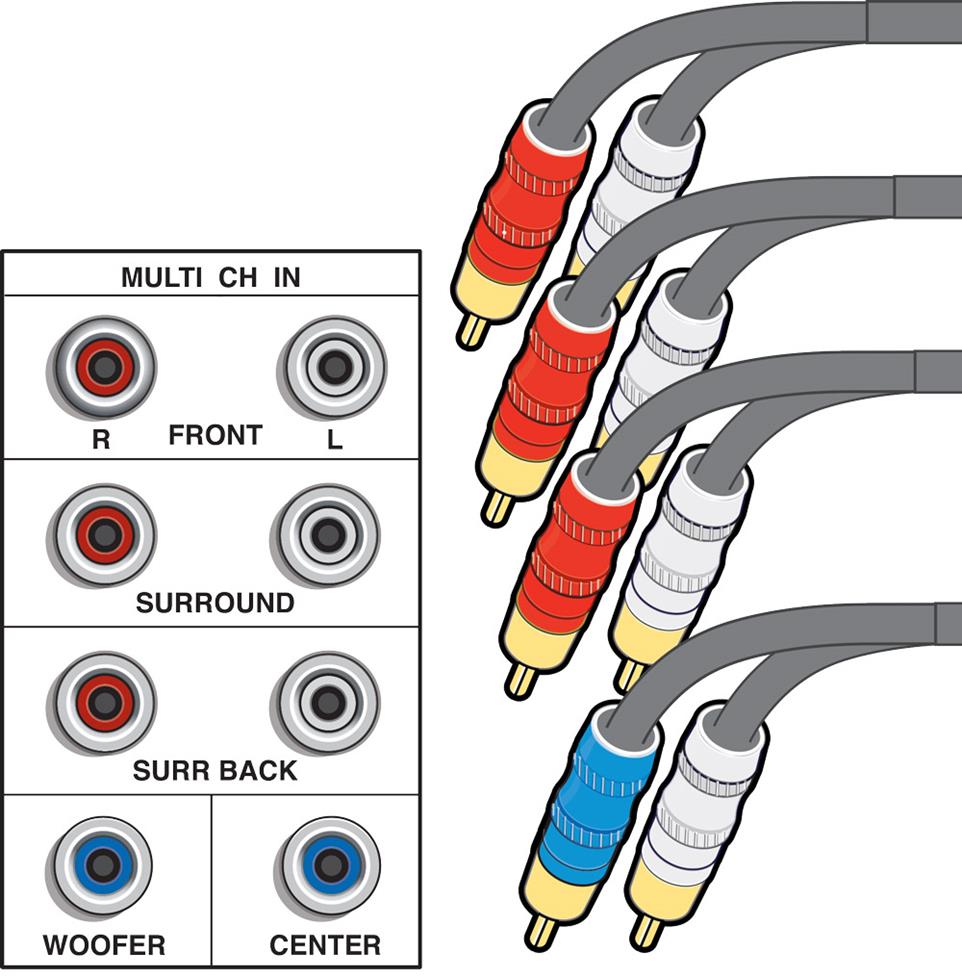
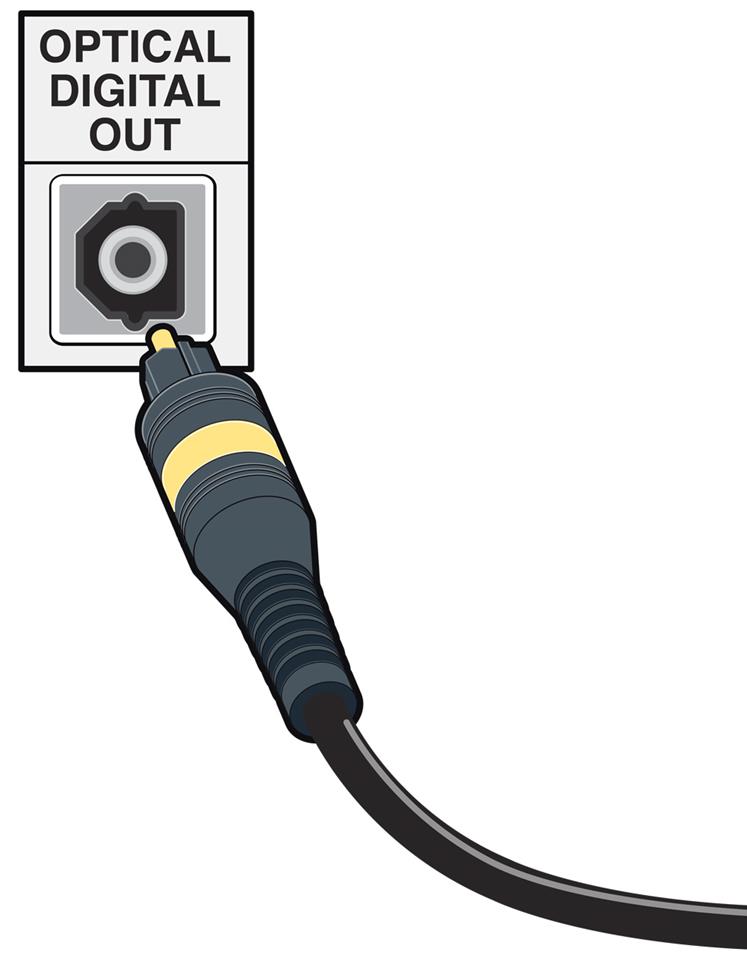
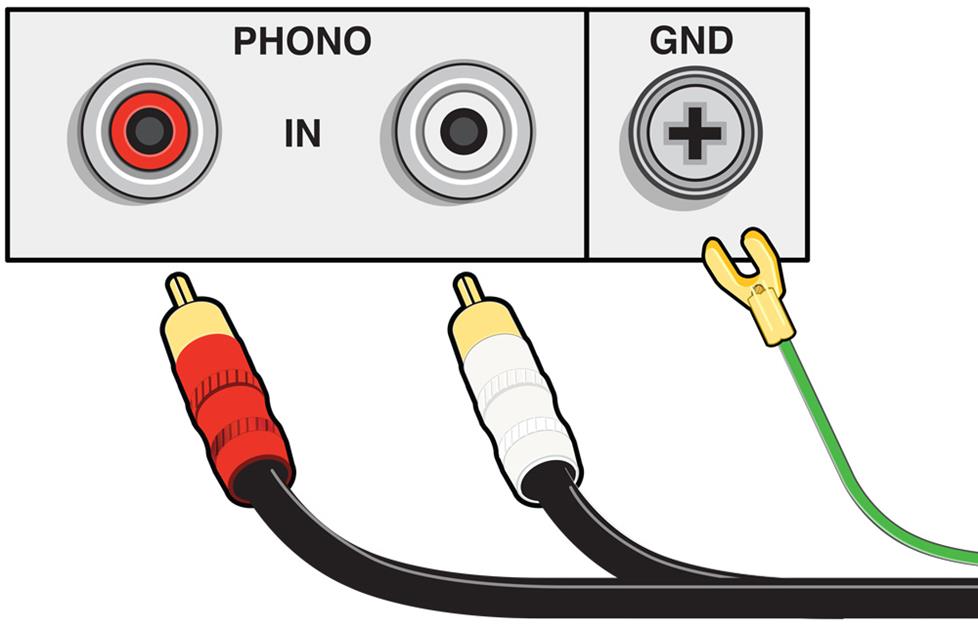
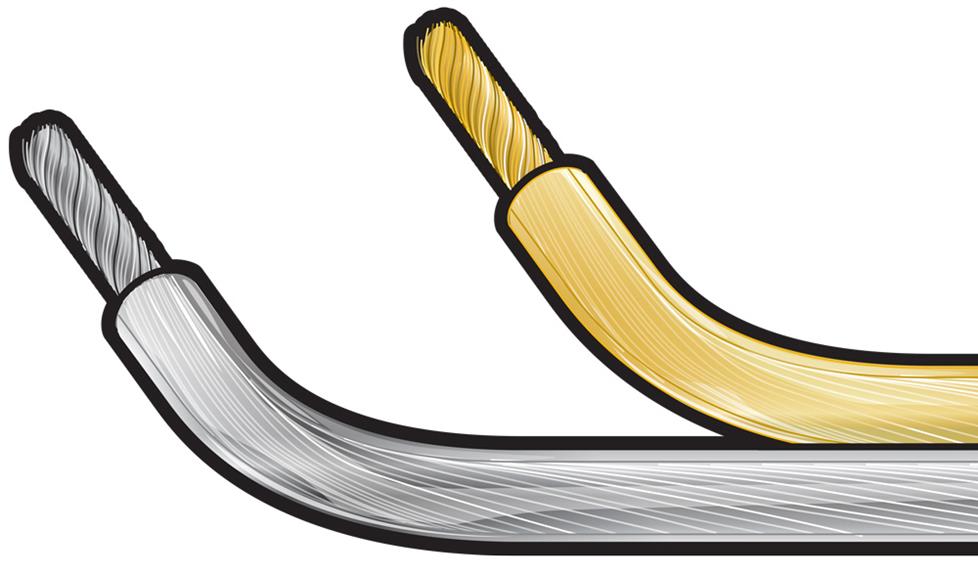
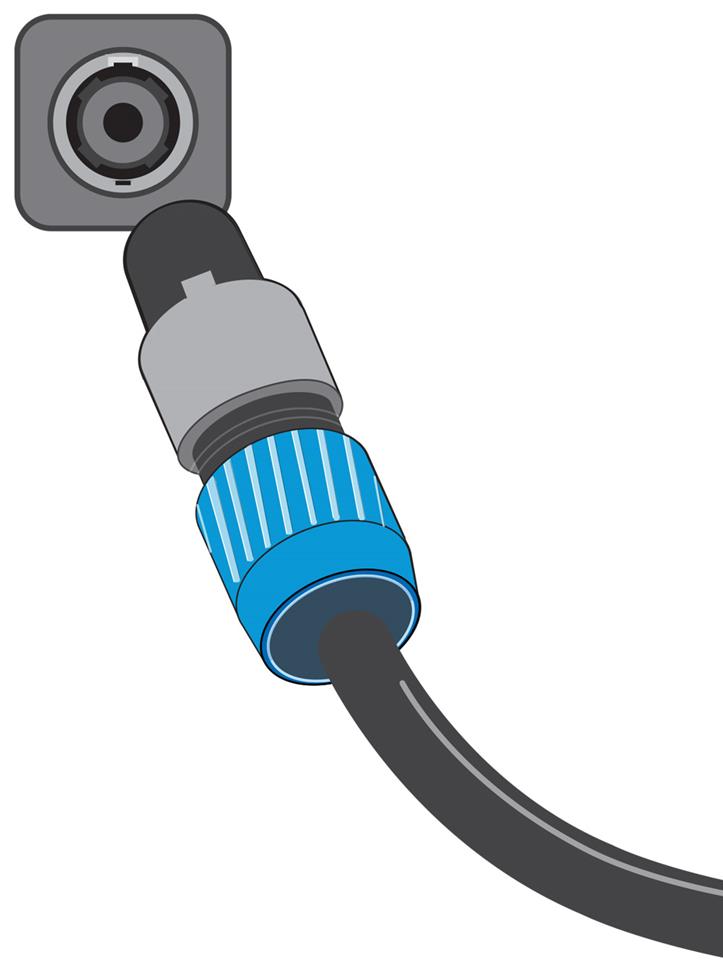
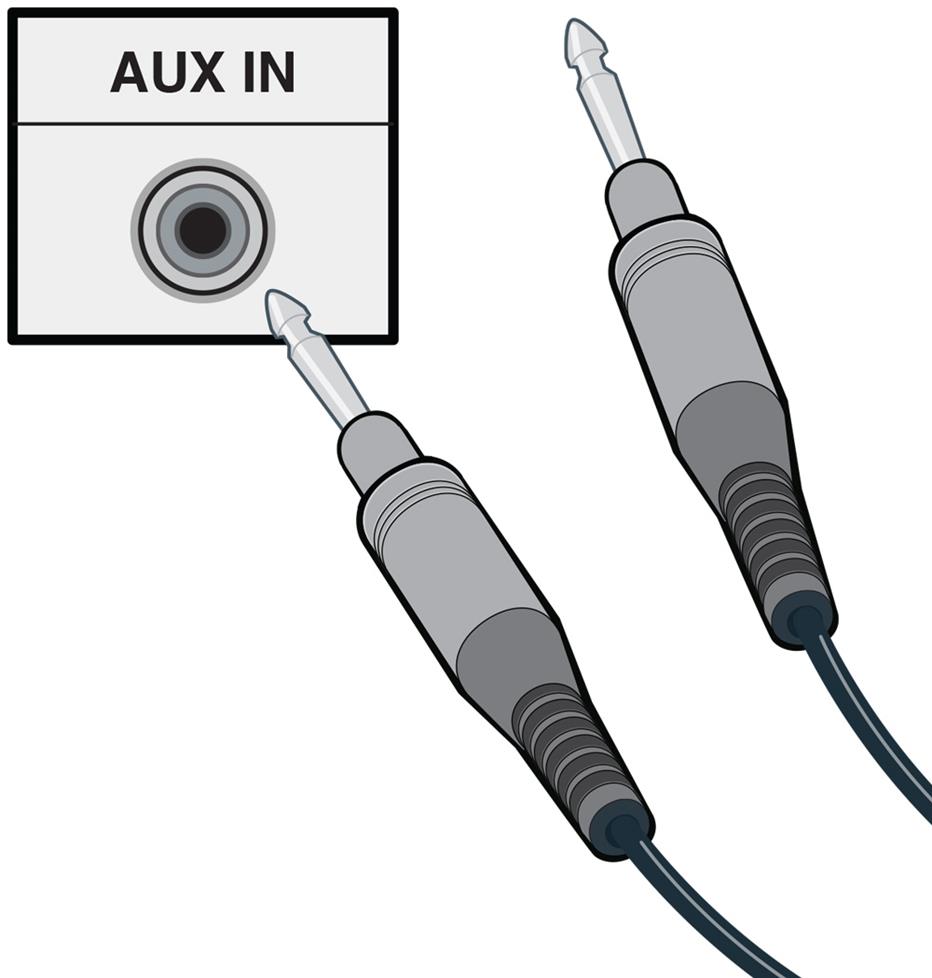
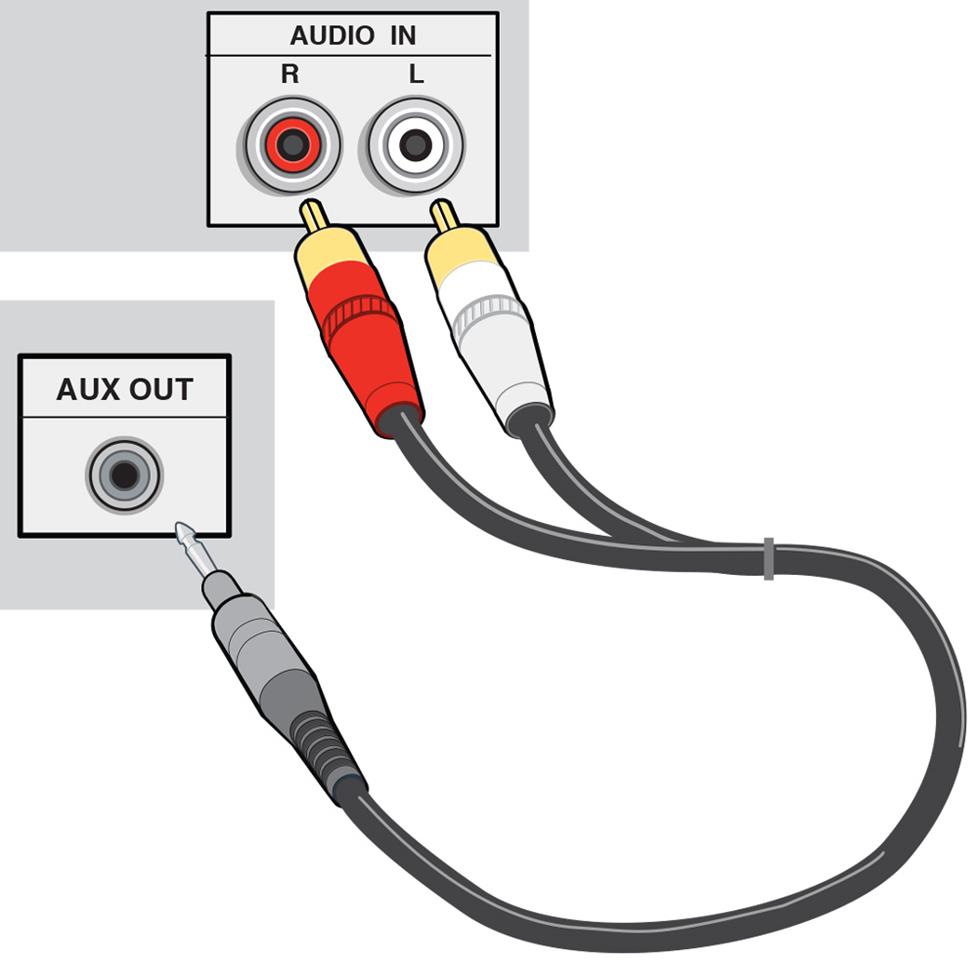
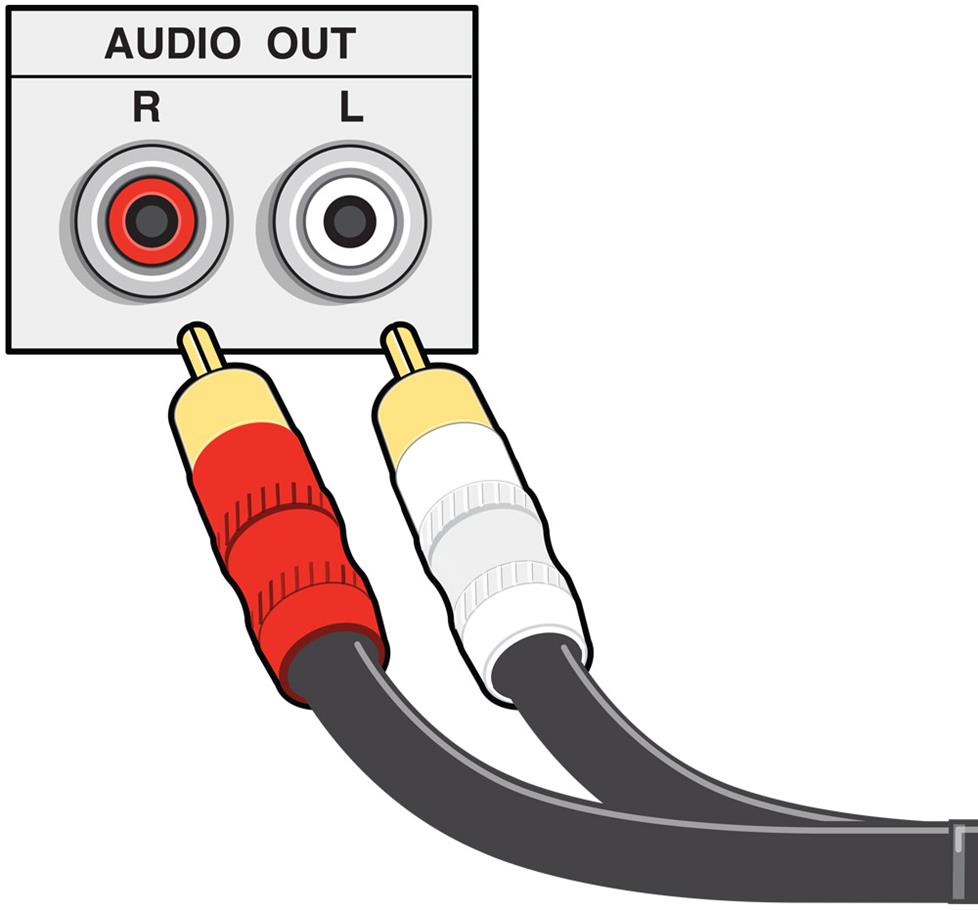
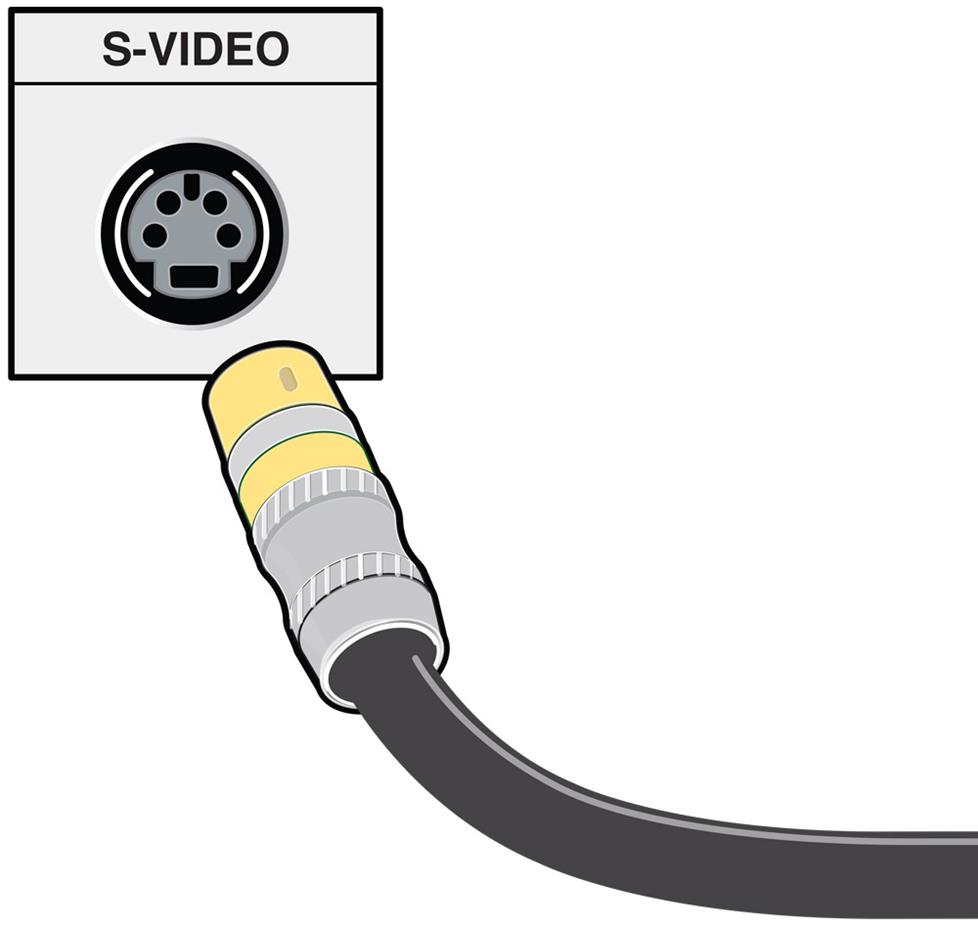
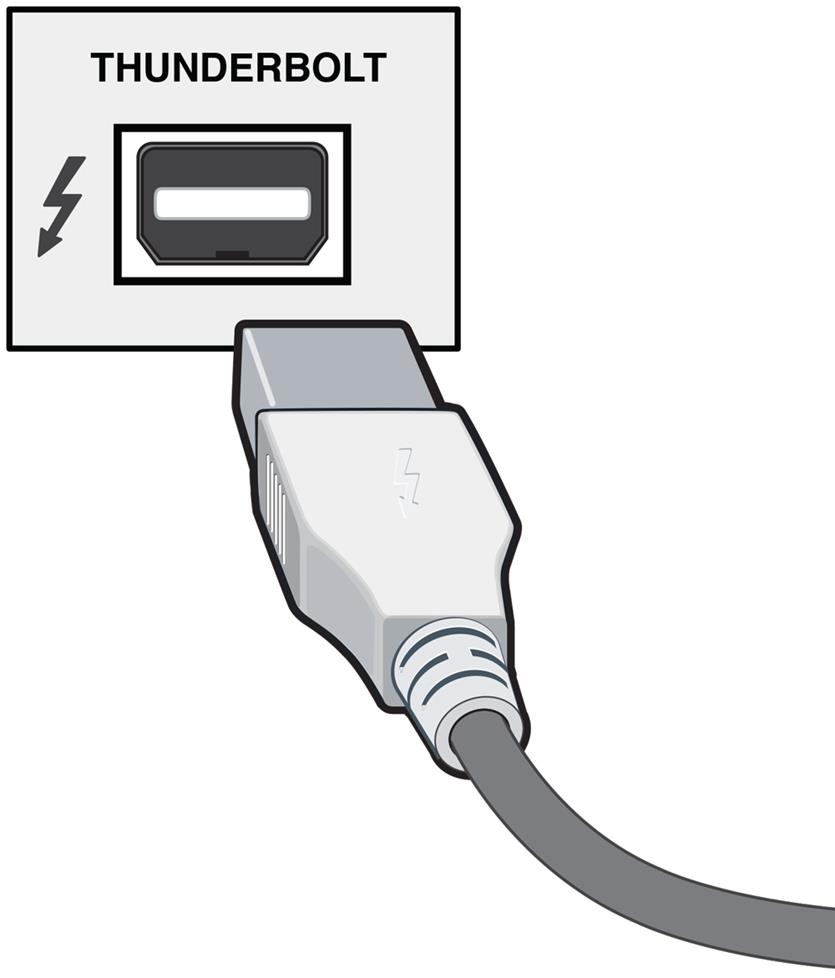

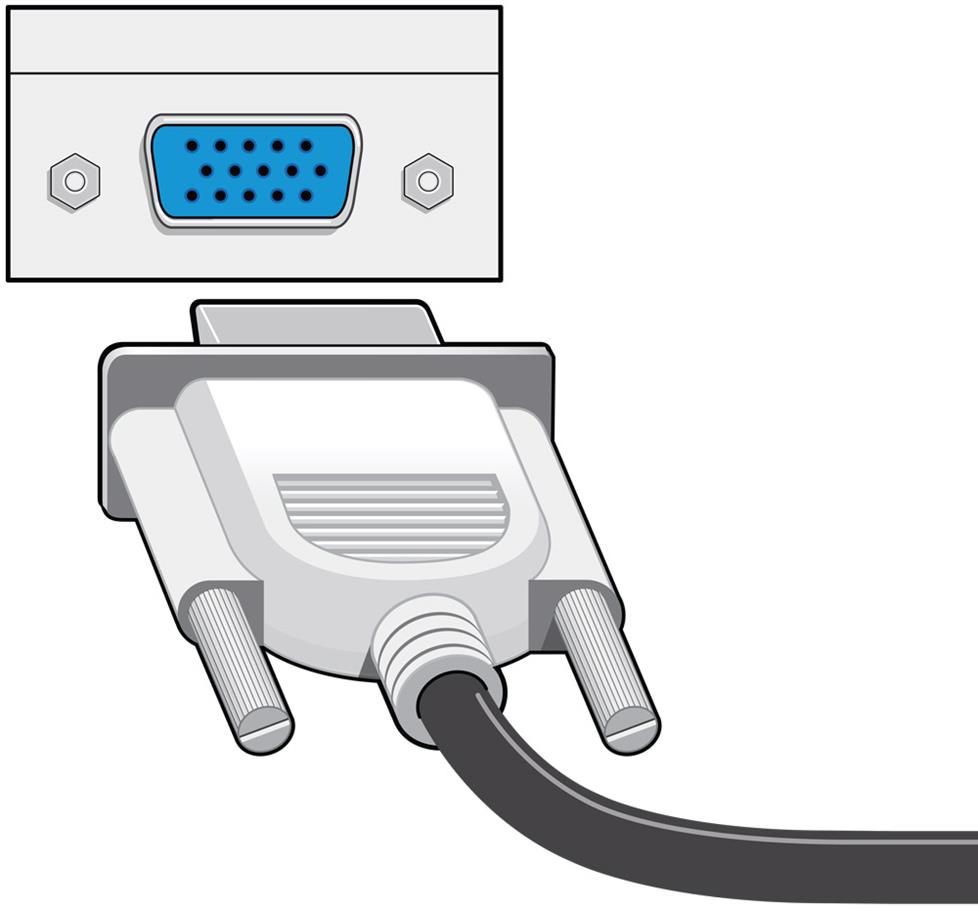
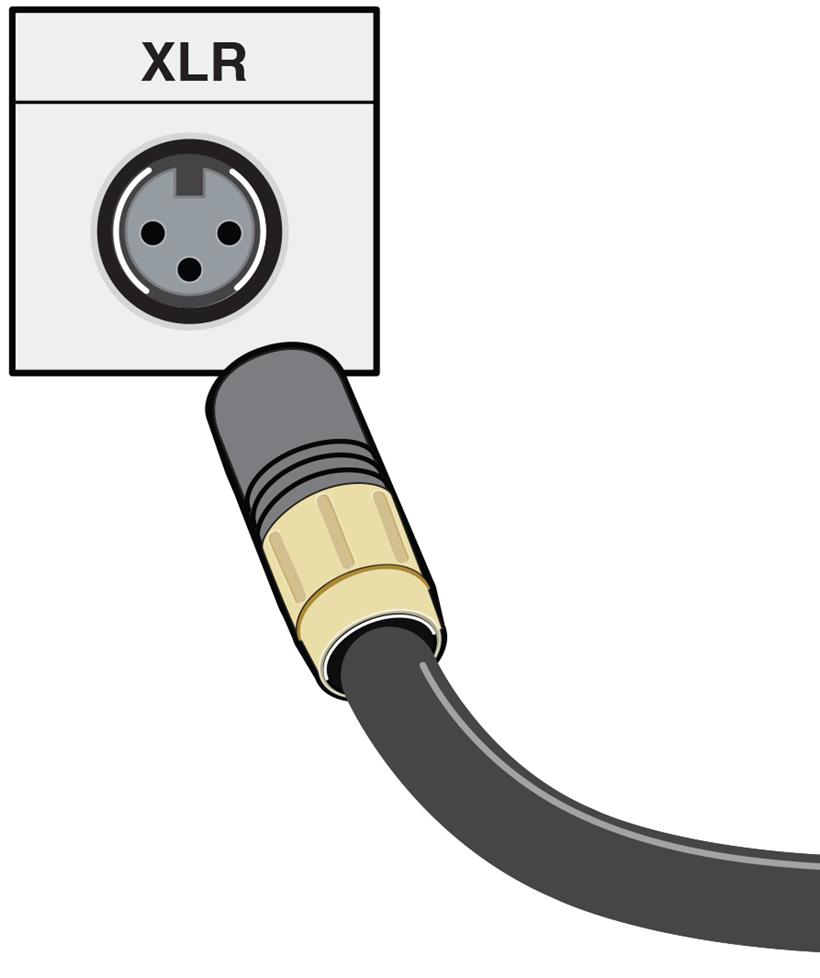


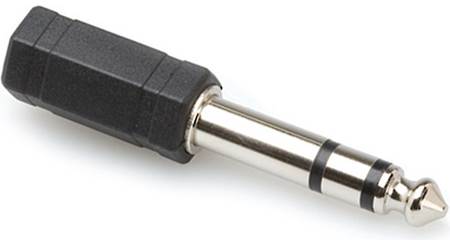
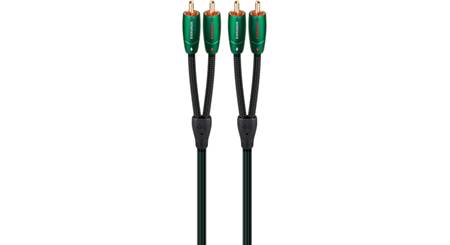
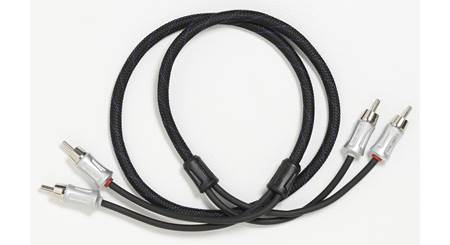
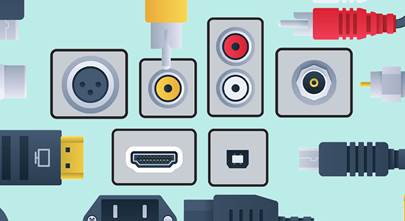
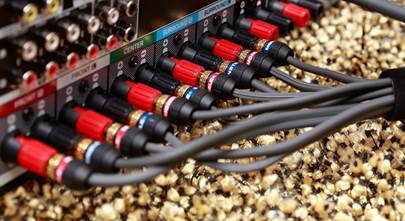
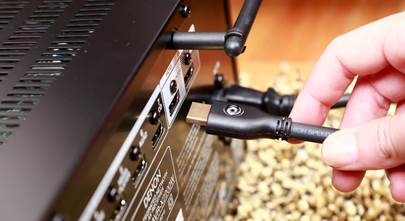

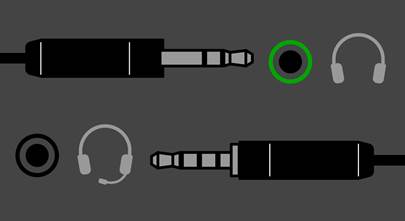
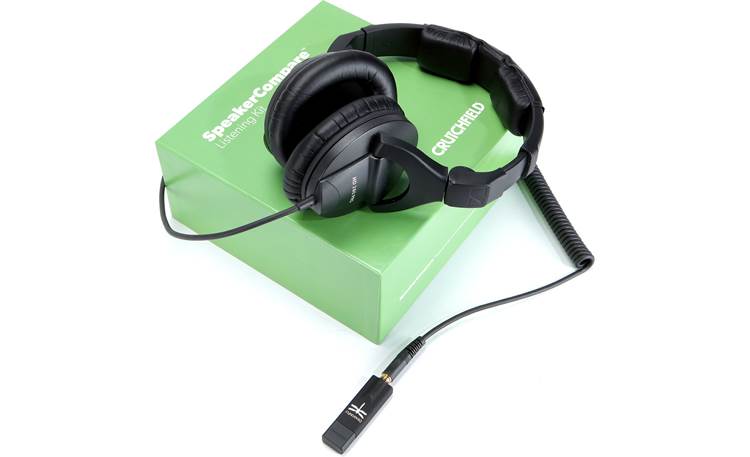
Jerry from Asheville NC
Posted on 8/4/2023
The list of speaker connections is pretty comprehensive for the typical types.... ...but if you own a Russound MC1250, what would you call that sort of connector for speakers? And then, where can one find them, outside of Russound?
Jim Weichel
Posted on 6/14/2023
Excellent list. You may want to add the newer USB connectors, including USB 3 and all the intervening connector sizes for USB even though they don't apply to many Receivers.
Deia Z. from Crutchfield
Posted on 4/10/2023
Hi Neil. For a 12-volt trigger connection, you would need a 3.5mm mono cable. I hope that helps!
neil
Posted on 4/9/2023
How do you wire a trigger connection
Gabby from Denver
Posted on 3/4/2023
Question. what do we call the connection that requires speaker wire to be inserted and twisted into the speaker channel on a receiver? I have a technics sa-500 and I want to change the wire connections but need to know what they are called. Can't find any information. This guide is super helpful but it doesn't include what I'm looking for
Ed from Hillsboro, OR
Posted on 9/19/2022
EXCELLENT SUMMARY! Bookmarked for future reference. A single document with a consistent format (descriptions and illustrations) amplifies (no pun intended) the value of the information tremendously over isolated descriptions that often cannot be compared to one another.
Vincent P Hurst from Niagara Falls
Posted on 8/17/2022
I have Rica cables that sometimes have a short it is difficult to know which ones will get a short How much should I pay for good Rica cables is there a cable tester or liquid or spray that can fix the problem?
JC from Toronto
Posted on 8/7/2022
An excellent article. Many thanks.
Diego from Medellin
Posted on 2/17/2022
Excelente Artículo, muy claro e ilustrativo.
Maria from FOUNTAIN VALLEY
Posted on 12/5/2021
I have an amplifier with ethernet wall to plug the speakers. What kind of cable do I need to use for my speakers with bare wires.Thanks
Kramer Crane from Crutchfield
on 12/7/2021